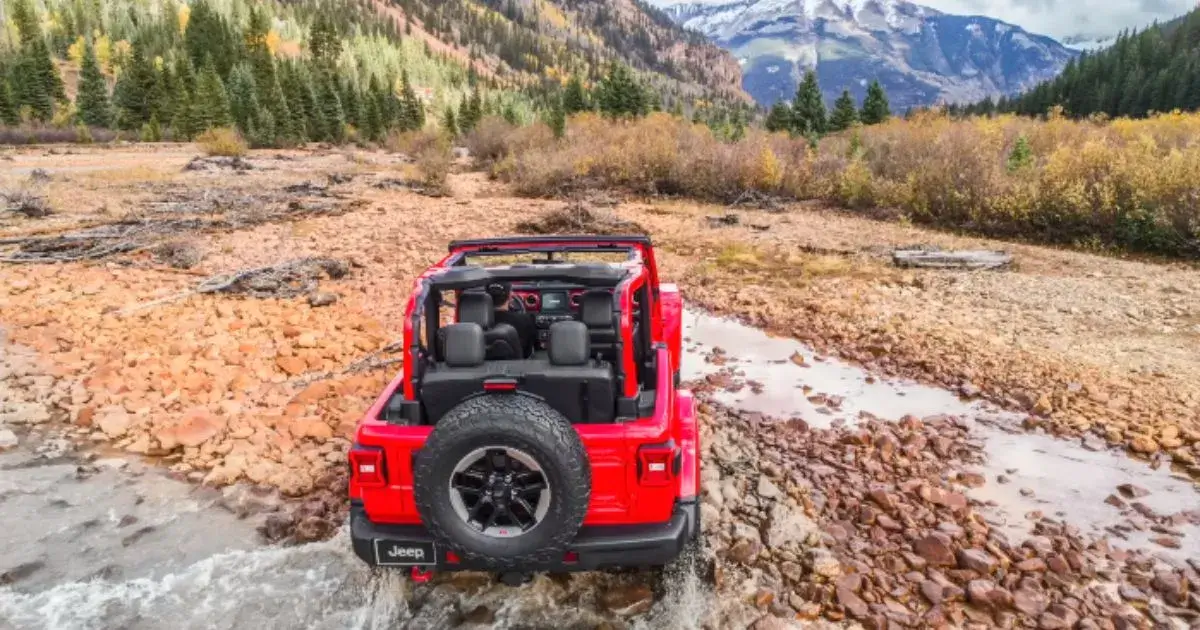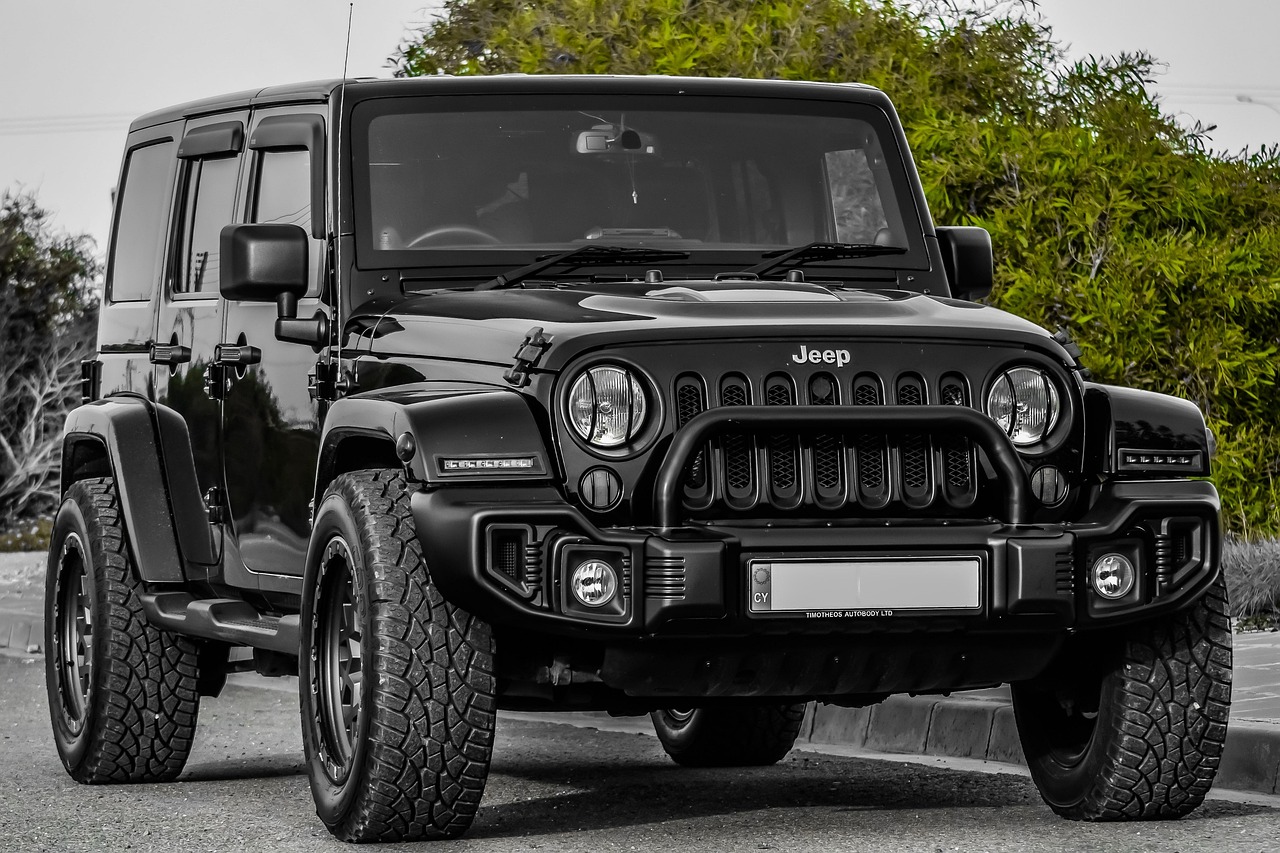How Many Miles Does Jeep Wrangler Last? Unlocking the Secrets to Its Longevity
How Many Miles Does Jeep Wrangler Last? Unlocking the Secrets to Its Longevity jeeps.truckstrend.com
The Jeep Wrangler is more than just a vehicle; it’s an icon, a symbol of adventure, freedom, and rugged capability. Known for its unparalleled off-road prowess and distinctive design, the Wrangler has captured the hearts of enthusiasts worldwide. But beyond the thrill of tackling challenging trails and cruising with the top down, a common and crucial question arises for prospective and current owners alike: "How many miles does a Jeep Wrangler truly last?" Understanding the potential lifespan of this legendary SUV is vital, as it impacts everything from resale value and long-term ownership costs to the very decision of purchasing one. While there’s no single magic number, a well-maintained Jeep Wrangler can surprise many with its enduring spirit and impressive longevity.
The General Consensus: Expected Lifespan of a Jeep Wrangler
How Many Miles Does Jeep Wrangler Last? Unlocking the Secrets to Its Longevity
When discussing the lifespan of any vehicle, the 200,000-mile mark often serves as a benchmark for what’s considered "long-lasting." For the Jeep Wrangler, reaching and even exceeding this milestone is not just a pipe dream but a realistic expectation for many owners. With proper care, diligent maintenance, and responsible driving habits, a Wrangler can reliably serve its owner for well over 200,000 miles, and some dedicated enthusiasts report their Jeeps pushing past 300,000 miles.
However, it’s crucial to understand that this longevity isn’t guaranteed merely by the Jeep badge. The Wrangler’s robust body-on-frame construction and generally durable powertrains provide an excellent foundation, but the actual mileage achieved is a complex interplay of various factors, primarily revolving around how the vehicle is treated throughout its life.
Factors Influencing a Wrangler’s Lifespan
The ultimate mileage your Jeep Wrangler achieves is a direct reflection of several key variables. Understanding these can help you maximize your vehicle’s life or make informed decisions when buying a used model.
1. Maintenance and Care: The Cornerstone of Longevity
This is arguably the most critical factor. Adhering to the manufacturer’s recommended maintenance schedule for oil changes, fluid flushes (transmission, differential, transfer case), filter replacements, tire rotations, and brake inspections is paramount. Neglecting routine services can lead to premature wear of components, reduced efficiency, and costly repairs down the line. A well-lubricated engine and properly maintained drivetrain components will simply last longer.
2. Driving Habits and Usage: How You Drive Matters
- Aggressive Driving vs. Gentle Driving: Frequent hard acceleration, sudden braking, and high-speed driving put more stress on the engine, transmission, brakes, and suspension components, accelerating wear.
- Off-Roading Frequency and Intensity: While built for off-roading, extreme rock crawling, deep mudding, or high-speed desert running can be incredibly taxing on the drivetrain, suspension, and frame. It’s not just about the immediate impact but also the increased need for post-off-road inspection and cleaning (especially to prevent rust).
- Towing: Regularly towing at or near the Wrangler’s maximum capacity can strain the engine, transmission, and braking system.

3. Environment: Climate and Road Conditions

- Road Salt: Vehicles driven in regions where roads are salted in winter are highly susceptible to rust, which can compromise the frame, body panels, and critical components, severely limiting lifespan.
- Extreme Temperatures: Very hot or very cold climates can put additional stress on fluids, hoses, and electrical systems.
- Potholes and Rough Roads: Constant exposure to poor road conditions can accelerate wear on suspension, steering components, and tires.

4. Model Year and Powertrain: Generational Differences
While all Wranglers are tough, some generations and specific engine/transmission combinations have reputations for being more robust than others. For example, the 4.0L inline-six engine found in YJ and TJ Wranglers (up to 2006) is legendary for its durability, often running for hundreds of thousands of miles with basic care. Newer engines like the 3.6L Pentastar V6 (JK/JL generations) are also highly capable and generally reliable, but like any modern engine, they benefit from meticulous maintenance.
5. Aftermarket Modifications: A Double-Edged Sword
Many Wrangler owners customize their vehicles. While quality modifications (e.g., proper lift kits, reinforced components) can enhance capability and sometimes even durability for specific uses, poorly installed or excessively aggressive modifications (e.g., very large tires without proper gearing, heavy add-ons without suspension upgrades) can put undue stress on the stock drivetrain, steering, and suspension, potentially reducing their lifespan.
6. Rust Prevention: The Silent Killer
Rust is a primary enemy of the Jeep Wrangler, especially in older models or those exposed to road salt. The body-on-frame design, while robust, can be compromised if the frame rusts through. Regular washing, undercarriage rinsing, and applying rust-preventative coatings can significantly extend a Wrangler’s life.
Maximizing Your Wrangler’s Longevity: Practical Advice
To ensure your Jeep Wrangler stands the test of time and delivers many years of reliable service, adopt these proactive measures:
- Follow Manufacturer’s Maintenance Schedule: This cannot be stressed enough. Stick to the recommended intervals for oil changes, fluid checks and changes, filter replacements, and spark plug replacements.
- Address Issues Promptly: Don’t ignore warning lights, strange noises, or changes in performance. Small problems can quickly escalate into major, expensive repairs if left unaddressed.
- Regularly Inspect for Rust: Especially if you live in a corrosive environment or frequently go off-roading. Clean the undercarriage thoroughly after off-road excursions, particularly if you’ve been in mud or saltwater. Consider professional rustproofing treatments.
- Drive Responsibly: Avoid aggressive acceleration and braking. Be mindful of potholes and rough terrain. When off-roading, understand your vehicle’s limits and avoid excessive strain.
- Choose Quality Parts for Replacements: When components wear out, invest in OEM (Original Equipment Manufacturer) or high-quality aftermarket parts. Cheap parts often mean a shorter lifespan and can even compromise other components.
- Consider Professional Inspections: Even if you’re handy, an annual professional inspection can catch issues you might miss, especially regarding suspension, steering, and frame integrity.
- Proper Off-Road Recovery and Cleaning: If you get stuck, use proper recovery techniques to avoid damaging the frame or drivetrain. After off-roading, thoroughly clean your Jeep, paying special attention to the undercarriage, axles, and suspension components to remove dirt, mud, and debris that can trap moisture and accelerate wear or rust.
Common Wear and Tear Components
While a Wrangler’s core components are durable, certain parts are more prone to wear and tear due to their function, especially with regular use and off-roading. Knowing these can help you anticipate future maintenance:
- Suspension Components: Bushings, shocks, and coil springs can wear out, leading to a rougher ride or poor handling.
- Steering Components: Tie rods, ball joints, and steering stabilizers can loosen or fail, affecting steering precision and safety.
- Brakes: Pads and rotors are consumables and will need regular replacement depending on driving style.
- Tires: Off-roading and aggressive driving can accelerate tire wear.
- U-joints/Driveshafts: Especially if frequently articulated off-road or subjected to heavy loads.
- Soft Top/Doors: While not mechanical, these can degrade over time due to sun exposure and use, impacting comfort and security.
When to Consider Retiring or Selling Your High-Mileage Wrangler
Even the most robust vehicles eventually reach a point where the cost of repairs outweighs their value or continued reliability. For a high-mileage Wrangler, consider these signs:
- Cost of Repairs Outweighs Value: If a major component like the engine or transmission fails, and the repair cost approaches or exceeds the vehicle’s market value, it might be time to move on.
- Frequent Breakdowns: If your Wrangler is constantly needing repairs and leaving you stranded, it’s becoming a liability.
- Safety Concerns: If structural rust or repeated failures of critical safety systems (brakes, steering) become an issue, it’s a clear sign to retire the vehicle.
- Unreliability: If you can no longer depend on your Wrangler for daily commuting or planned adventures, its primary purpose is diminished.
Factors Influencing Jeep Wrangler Longevity: A Summary Table
To consolidate the key information, here’s a table summarizing the factors that significantly impact how long a Jeep Wrangler lasts.
| Factor | Impact on Lifespan | Key Action/Consideration |
|---|---|---|
| Regular Maintenance | HIGH: Direct correlation with component wear. | Adhere strictly to manufacturer’s service schedule. |
| Driving Habits | HIGH: Aggressive driving shortens life. | Drive smoothly, avoid excessive strain, respect limits. |
| Off-Road Usage | MODERATE to HIGH: Can accelerate wear. | Drive responsibly off-road, perform post-off-road inspections. |
| Environmental Exposure | HIGH: Road salt and extreme temps cause damage. | Regular washing, undercarriage rinsing, rust prevention. |
| Quality of Repairs | HIGH: Inferior parts/work leads to early failure. | Use OEM or high-quality aftermarket parts; certified mechanics. |
| Rust Prevention | CRITICAL: Can compromise structural integrity. | Regular inspection, cleaning, rustproofing treatments. |
| Aftermarket Mods | VARIABLE: Can enhance or reduce longevity. | Choose quality mods, ensure proper installation, avoid over-modding. |
| Model/Engine Type | MODERATE: Some powertrains are more robust. | Research specific model year reliability; maintain all engines well. |
| Prompt Issue Resolution | HIGH: Ignoring minor issues leads to major ones. | Address warning lights/symptoms immediately. |
Frequently Asked Questions (FAQ)
Q1: Is 100,000 miles a lot for a Jeep Wrangler?
A1: Not necessarily. For a well-maintained Wrangler, 100,000 miles is often just getting warmed up. Many Wranglers easily go another 100,000 miles or more with proper care.
Q2: Do older Wranglers last longer than newer ones?
A2: Older models, particularly those with the 4.0L inline-six engine (YJ, TJ), have a legendary reputation for durability due to their simpler mechanics. Newer models (JK, JL) are also very robust but feature more complex electronics and powertrains, which may require more specialized maintenance. With proper care, both can last a very long time.
Q3: What are the most common issues that limit a Wrangler’s lifespan?
A3: Rust (especially on the frame), neglected maintenance leading to engine or transmission failure, and wear on steering/suspension components from heavy off-roading are common factors that can limit a Wrangler’s lifespan if not addressed.
Q4: Can off-roading significantly reduce a Wrangler’s life?
A4: Yes, if done irresponsibly or without proper post-off-road care. Extreme off-roading puts immense stress on all components. However, with responsible driving, proper recovery techniques, and thorough cleaning/inspection afterward, a Wrangler can be off-roaded regularly without significantly shortening its life.
Q5: Is it worth buying a high-mileage Wrangler?
A5: It can be, but careful inspection is crucial. Look for comprehensive service records, evidence of regular maintenance, minimal rust, and a clean bill of health from a pre-purchase inspection by a trusted mechanic. A high-mileage Wrangler with a history of good care can be a great value.
Conclusion
The question "How many miles does a Jeep Wrangler last?" doesn’t have a single, fixed answer, but rather a spectrum of possibilities dictated by the owner’s commitment to its well-being. While the inherent ruggedness of the Jeep Wrangler provides a strong foundation, its ultimate longevity rests squarely on the shoulders of its owner. By prioritizing consistent maintenance, adopting responsible driving habits, addressing issues promptly, and actively combating rust, a Jeep Wrangler can reliably serve its adventurous owners for well over 200,000 miles, becoming a testament to enduring capability and a cherished companion on countless journeys, both on and off the beaten path. Invest in your Wrangler’s care, and it will return the favor with years of unforgettable experiences.






